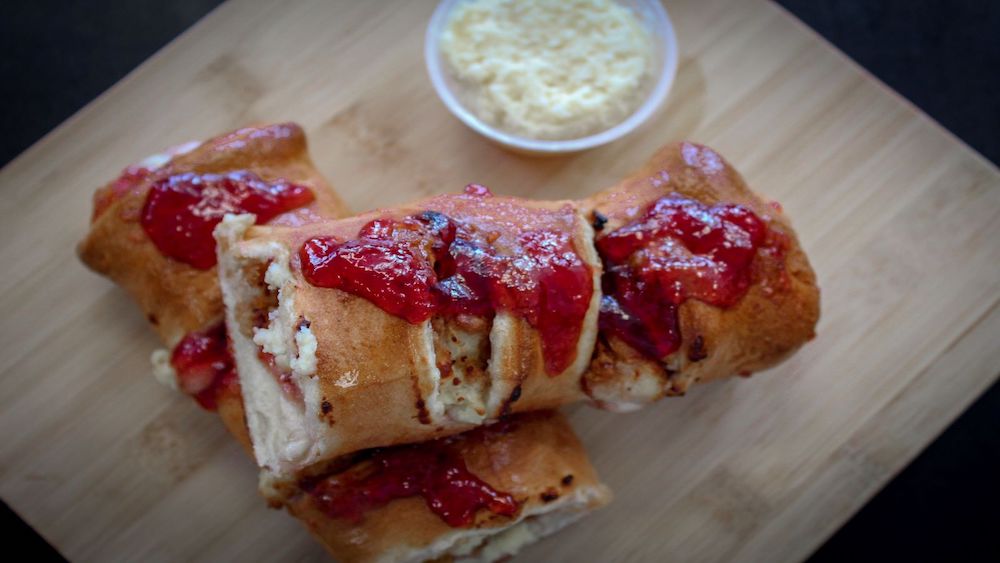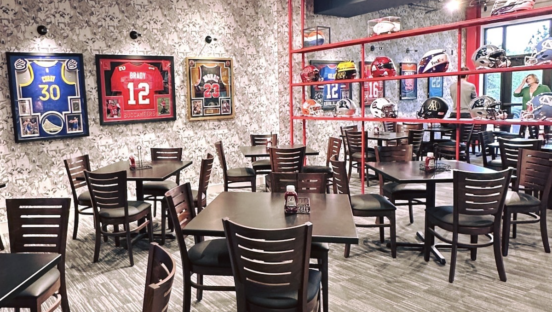As schools have closed down across Florida due to the coronavirus pandemic, low-income Broward County children who depend on school lunches are getting treated to the best free food of all—pizza, courtesy of serial entrepreneur John Stetson, owner of four Stoner’s Pizza Joint franchises in Fort Lauderdale, Florida, and Savannah and Warner Robins, Georgia.
At his Fort Lauderdale store, Stetson recently committed to donating 10,000 pizza slices to local kids who face food insecurity during the ongoing health crisis. According to the Sun Sentinel, Stetson last Friday donated 240 slices to Dania Beach’s St. Ruth Missionary Baptist Church, which has been providing free child care for families affected by school closures, and earlier donated 240 slices to the church itself.
Related: 5 ways to increase your pizzeria’s revenue and save money during the coronavirus crisis
He has also put out a call to the community at large, offering to work with other organizations to get food to children who need it.

John Stetson recently dropped off free pizzas at St. Ruth’s Missionary Baptist Church, which has been providing free child care to families in need during the coronavirus pandemic.
“As a father of two young kids, it was heartbreaking to find out that there were children in our community that would not have access to food for lunch while they were not in school,” Stetson told Lifestyle Media Group in a March 23 article. “Since Stoner’s Pizza has remained fully operational and already had a built-in delivery and carryout system, it was easy for us to jump right in. There was no better place to start than with our children in our back yard.”
Meanwhile, PMQ asked Stetson to share advice and tips on how his fellow pizza restaurateurs can weather the coronavirus crisis—and bounce back when it’s over.
PMQ: Now that delivery and carryout are the only options for many pizza shops, what are the key messages pizza restaurateurs should communicate to their customers? What do customers want or need to hear?
Stetson: The safety of our teammates and guests is the No. 1 priority in times like now, so it is important to reassure the guests and educate them on the extraordinary measures that businesses are taking to ensure food safety. Some easy steps would be as follows:
- Designate a shift “safety captain” tasked with ensuring execution of all new safety protocols.
- Educate guests on how staff is utilizing gloves, properly washing hands after every delivery, etc.
- Push for digital ordering and cashless transactions, sanitizing pens after each use as needed.
- Sanitize ALL surfaces frequently. Set an alarm every 20 minutes for cleaning reminders.
- Consider providing single-use menus or digital screens to eliminate the potential for cross-contact.
- Set up a contactless delivery and/or carryout pick-up system where guests’ food is left for them.
- Change in-house sanitation buckets every 1 to 2 hours and change sanitizer rags after each use.
- Clean/sanitize in-house and mobile phones after every use as needed for business operation.
- If anyone is feeling sick, make it a policy that they are to stay home or go home.
PMQ: How can pizzeria operators maintain top-of-mind presence via social media right now? What should they be doing on Facebook or Instagram to stay in front of consumers?
Stetson: It is important to communicate frequently and regularly right now. Being as vocal as you can be about all the efforts your business is making is critical. We are specifically communicating value-oriented specials to stay top-of-mind for consumers at the moment since discretionary spending is extremely tight. Additionally, we have found that there are many people in real need at this time, so we’re extending ourselves as a resource to the community and helping feed those who have been laid off and are having trouble with basic necessities. We are here to support our communities in any way we can; ensuring that they hear that loud and clear is essential so that those who need our assistance can get it, and those businesses that are in a position to help can step up when the community needs them most. We need positivity right now, so the more you can project positivity via social media, the better for the community.
Related: The Coronavirus Crisis: 8 more survival tips for pizza restaurant operators
PMQ: How can restaurants demonstrate that they are good corporate citizens who care about their community? What should they be doing to help?
Stetson: This goes back to what businesses are communicating on social, which is that you are there to help the community, however you can. For example, we recently did this locally in Fort Lauderdale by reaching out to the county school system and offering to donate 10,000 slices of pizza to organizations providing childcare and feeding the children in need amid the school closures.

The Cheesecake Stromboli is a popular dessert item on the menu at Stoner’s Pizza Joint.
PMQ: Once pizzerias and restaurants can reopen their dine-in operations, what are some best practices to keep in mind when staffing up again? Should they move slowly?
Stetson:This is going to be something that will vary by restaurant and region. The most important thing you can do is continue to monitor the macro situation and resources available to you and adjust accordingly as it relates to your specific situation. Whenever we get to a place of “normality,” it will be important to adjust slowly and not get caught upside down. An easy way to avoid getting caught short-handed or heavy-handed is to focus on your labor costs hourly. Ensure that you are operating within your target-labor range hour by hour and adjust staffing as needed daily.
PMQ: What are the biggest mistakes pizzeria operators and other restaurateurs need to avoid they reopen for dine-in?
Stetson: Plan your work, then work your plan. That means accounting for both best and worst-case sales projection scenarios and then operating within your means and managing the business by the numbers. It will be critical, when reopening, to establish your daily break-even costs by understanding your Prime Cost targets and managing them accordingly. This will mean operating with an eye on labor cost percentages on an hourly basis and taking inventory daily, so you have an accurate representation of daily COGS and also to turn inventory as quickly as possible to avoid money sitting on shelves by over-ordering or leading to potential waste.













